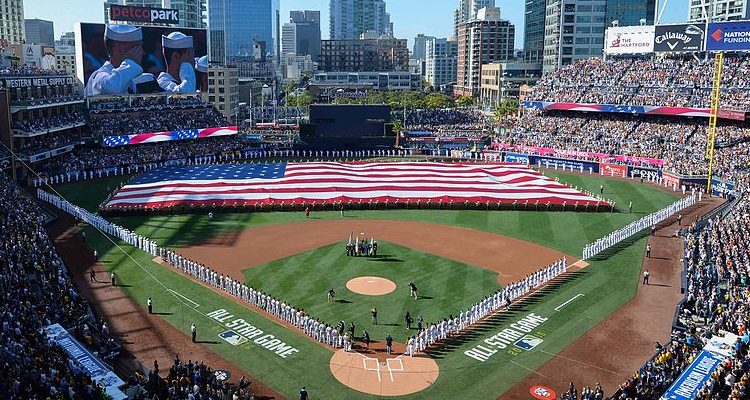
Photo Credit: wikimedia
In November, top baseball social media influencers, leading media personalities and Easton Diamond Sports came together at the “Future of Baseball Social Media” summit to talk about the future of baseball content in the era of social media. While there were a number of topics up for discussion, perhaps the most important of these was the decline of traditional media and the need for social media to pick up the slack. If baseball is to remain “America’s pastime,” then it needs a new generation of social media influencers to spread the word and build engagement at the grassroots level.
Competition from other sports and pastimes
It’s important to keep in mind that, just because a sport was popular 25, 50 or 100 years ago, that it will continue to be popular in the modern era. Just think about boxing, for example. At one time, boxing was one of the most watched spectator sports in the nation, and many of the top boxers became not just American heroes, but American icons. But what about today? Sports like professional wrestling and MMA are now more popular, and boxing seems to be getting by on its former glory.
The concern, of course, is that baseball could be following the same type of trajectory. At one time, the World Series was the type of event that you’d gather with your family in front of your living room TV to watch, and a game-winning HR in the bottom of the ninth would become the stuff of legend. Now, however, the World Series not only competes with sports like football and hockey (both of which are no longer afraid to program events at the same time as baseball), but also with Netflix, Hulu, and all of the other digital entertainment choices out there. Some would also argue that the style and pace of play in baseball no longer is relevant for the digital era, and every year, there is a debate about how to speed up games.
Baseball content for social media
At the “Future of Baseball Social Media,” one of the big takeaway lessons was that “authentic stories” and “engaging content” are the keys to interacting with players, coaches, families and baseball enthusiasts. In many ways, this is Social Media 101. Talk to any social media consultant, and you’d probably hear about the importance of “authenticity” and “engagement.”
The big question, though, is how much “authenticity” baseball really wants or needs. In past generations, “authenticity” might have meant the story of a good suburban kid growing up playing catch in the backyard, becoming a star athlete in high school and college, and making a big-time debut in front of a hometown crowd. Today, however, athletes are coming from all over the world – not just the Caribbean and Latin America, but also Asia. Keep in mind, too, that performance-enhancing drugs are also part of any “authentic” conversation about baseball. Will these “authentic” stories resonate in the same way with American audiences?
Other questions to consider for baseball social media content
Beyond authenticity and engagement, there are plenty of other issues for baseball social media content providers to consider. One of these is the evolution of brand partnerships and collaboration. How involved should companies like Easton be in shaping narratives around baseball content? And another issue is the rising of new, non-traditional social media platforms such as Twitch and TikTok. Should MLB be embracing these platforms in order to attract a younger demographic?
One thing is certain: with the decline of traditional media, social media has to play a bigger role than ever in building engagement across all demographic groups. If baseball wants to continue to be “America’s pastime,” it will need to do a lot of careful thinking about how to create the right type of social media content to connect with the right type of audience.